The Small Figures in My Work
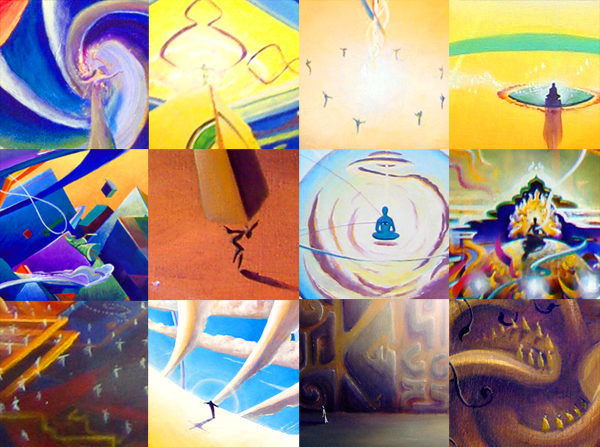
Using my smallest brush I painted a small figure standing atop a flame, holding onto some sort of physical structure like an axis with 45 degree angles. The figure is checking out the view from up there, so to speak. It's a pretty far out view but not a very big canvas. The very tiny person up there - really just a silhouette with perfect little curves - was painted with my tiniest brush: a #0 Kolinsky long handled brush, a lovely brush, really. I'm afraid I've almost worn it out.
As I placed the faintest of dashes to suggest a left hand, I thought about my habit of painting very tiny people into my paintings. I always paint them not in relation necessarily to the canvas itself but, instead, in relation to the smallest brush I have and in relation to the largest thing going on in the peice. I want them to be small. The painting, no matter the size, usually has similar sized small figures. They are always making the canvas seem huge because our eyes pick out the shape of the figure in it and relate then to that shape. It is sort of in the same way the we anthropomorphize all kinds of objects, placing emotions, etc, upon them. We see the shape of a person and we relate to that shape and then relate to the rest of the image in terms of that figure. With the paintings that have these tiny painted figures I want to create the greatest sense of space with them: a sense of grandeur and depth maybe; a sense of approaching the infinite and, really, being very small in that view.
What Painting Is
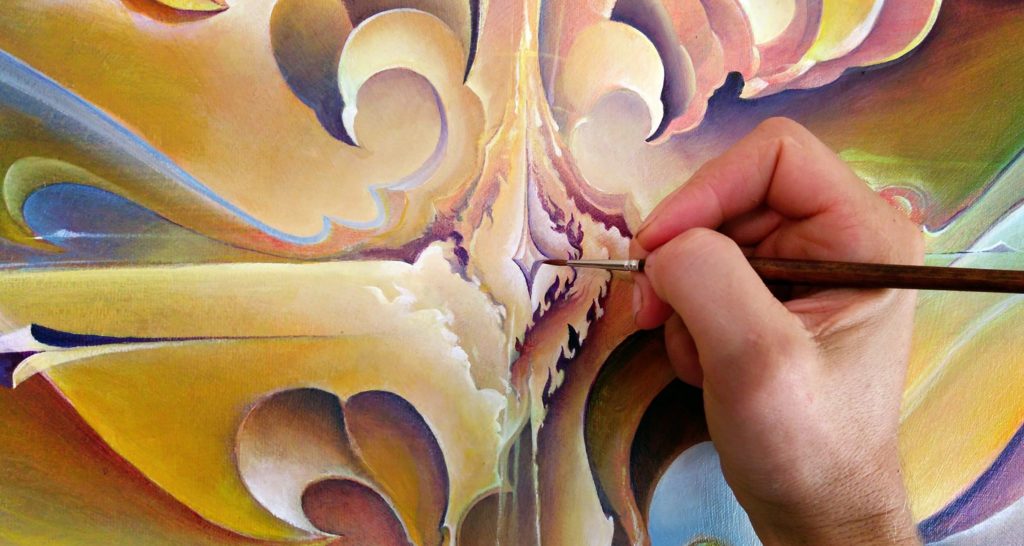
I wake up because the cat is mrowing because he's hungry and I slept fifteen minutes later than I usually sleep and he's come over to my side of the bed imploring me to please get up now because he is HUNGRY but I'd like to sleep even though I know I am going to get up because morning and painting. I pull myself up while Violet stays sleeping. The sun is up though not broken over the hill yet so it's still early which is good. When I do the math, it means X number of hours til noon which is the general cut off time to go do other things even though I always think that I could get up earlier. If I wanted to. If I was enough. So I get up. Dressed. Tell the Fi - I'm coming. I'm coming. I open the blinds in the living room. I pull out his bowl. My mind, sometimes feeling defeated early in the morning, too many loose ends and threads that I don't understand, people to call or emails to send but ultimately, for now, just looking for the thread to the brush.... I make tea. I feed the cat. I carry my tea downstairs to my studio. Then I go back and get the Fi because he's old and has a hard time navigating the stairs. I sit in my chair, drinking tea, staring at my painting finding the thread - where I left off - the place I pick up again - and the part of me that wants to stand there for another 4 or 5 hours knowing there's tired feet and a tired tailbone waiting for me. I drink tea. Eventually, the moment is right and I stand. I put some paint on my palette. I pick up the brush. I poke. I prod. I shade. Eventually, along the way, I wake up. Mind and heart scream and yell or whimper or plead or whisper entreaties of all the things I can do or be. Mind and heart - they just do what they do on and on and on. But, eventually, somewhere along the way, I hit that note. I strike that chord. And it's all going and flowing and golden again, like it has always been. It's that dance again that I know so well and love so much and am honored and humbled to explore every day and will do it over and over and over again oh my god I love painting so much. And when I walk away from that easel, I am again.
On the Clouds (In My Artwork)
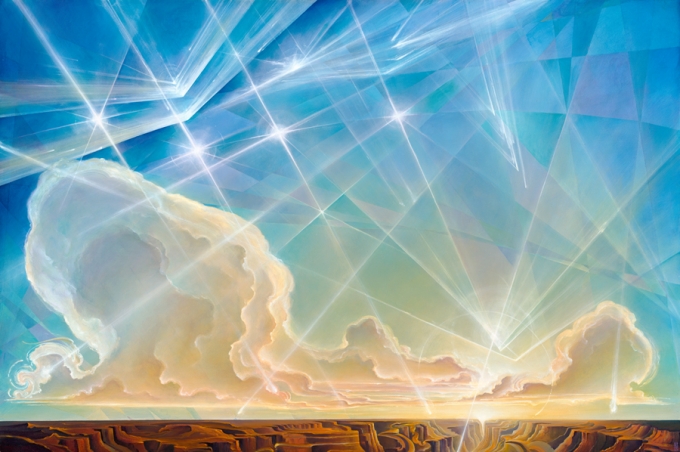
If people talk about my art in the future, they will probably, at some point, mention the clouds. So before possible future critics extrapolate on my intentions, I'd like to share some thoughts on the subject myself - that is: the abundance of clouds in my paintings.
Because there is definitely an abundance of clouds.
What Is There Left To Paint?
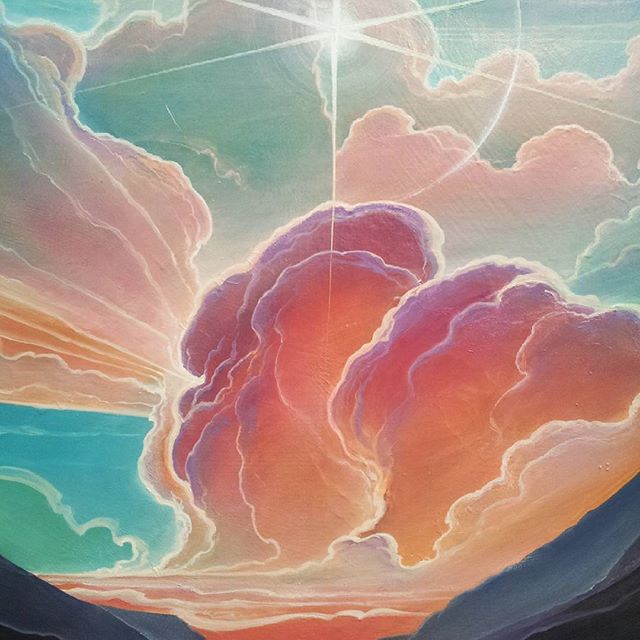
A frequent question that is asked of me: where does it come from? What inspires me?
Violet reminded me that the etymology of the word 'inspire' is rooted in the word 'breath' and that 'inspire' is a way of saying 'breathing life into'. So the question really is 'what breathes life into my work?' Where do I find the momentum - the life - to keep putting brush to canvas? Everyday I wake I think about those paints, those colors, that question.
Art is an act of Love

Businesses run on products: product conception, product development, product sales, product redevelopment, and so on. Products products products. If we are not buying a product then we are producing a product or selling a product or discarding a product in order to replace it eventually with another theoretically superior product. These products are largely made for two reasons: to make money for the creator/sales person and to satisfy a utilitarian need that some aspect of our human existence has necessitated. Sometimes that aspect is basic: a shirt to protect us from the cold, shoes to protect our feet, etc. Other times - and this is often the case - the need goes much deeper - products are bought and sold to satisfy a desire to be attractive, to be beautiful, a desire to reflect some part of our perceived identity, and, most importantly, a desire to be loved. In the end, it seems difficult to decipher the difference between 'basic need' and 'desire'.
Artwork, at its purist, at its most whole, is born from the desire - an inner urge - to create. It is the desire of self-expression and bringing something new into the world. That urge drives us forwards - compelling us to always do more - because that which we have already made is never fully satisfying.
In the Beginning (of a Painting)
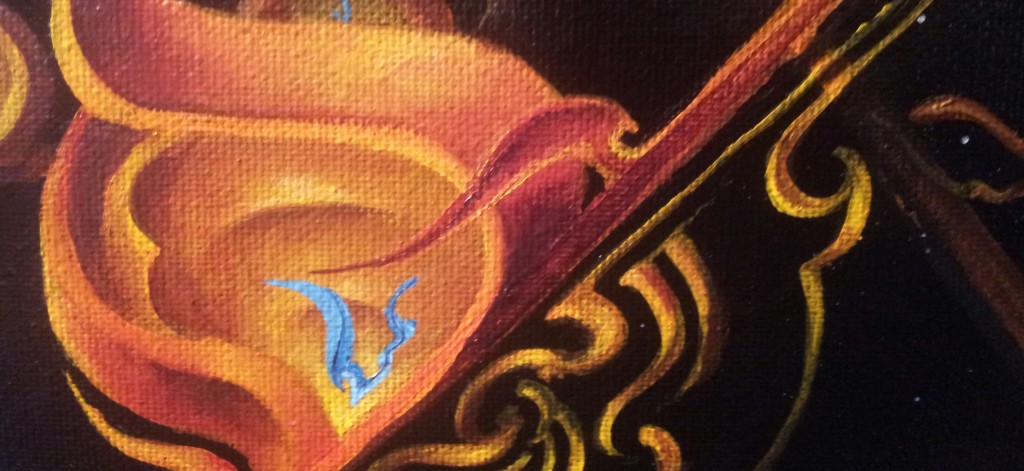
I spend an enormous amount of time thinking about paintings I want to paint. And not just thinking about them but seeing them, feeling them, considering them. Sometimes they are in my vision when I'm making dinner and I'm chopping a carrot or a stalk of broccoli and I'm seeing this painting. It sort of lingers in the vision - in my mind, in this place between hallucination and imagination...
Small paintings: I make small things like 11x14 and such and they are relatively quick... They are a small facet, an aspect of myself - they are very precise and don't require as much forethought. They come from drawings and ideas of course, but they don't have as much going on with them of course. Likewise, they allow depth and scope and that, too, require some consideration - some allowance of what it might be but not like a larger painting. Why? I think in part it's because if I'm going to invest the time it takes to paint something that's larger than a couple of feet tall, then there is serious intention… there's serious consideration about how I am going to spend my time - IS THIS WORTH IT? Do I want to go there?
What I Learn From Painting
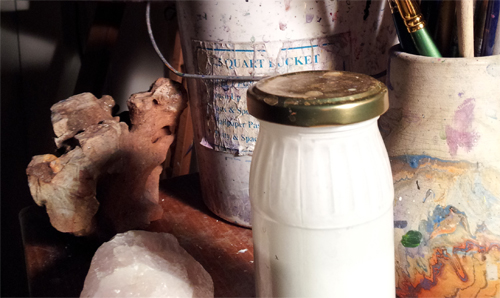
Around 2am I usually just can't paint any more. Sometimes it's a tad later. Sometimes a tad earlier. But usually it's about five or six hours in and my hand is cramped and my back is aching and my eyes are starting to blur and my brushstrokes start to lose their precision. The good things is that once I get like that I usually feel pretty good about my work for the night. It means that I covered a lot of ground. Painting is about 'the process' as much as 'the product'. Sometimes, it's just a lot of blanks to fill in. You see, the story is written. The path is clear. I'm just following a dotted line that leads to an inevitable conclusion. There are nuances to be explored, and colors and lines to be enunciated but the gist of the piece - this piece that I'm working on right now anyhow - was decided long ago. I am merely completing the vision.
While I paint, my mind wanders through many worlds and my heart travels through multitudinous emotions the way one might try on different outfits. And there are pure zen moments where I'm not thinking about anything. Or elated loving moments where my heart is suddenly sort of glowing. Don't dwell on it, though! Such feelings are mere feelings and as ephemeral as the clouds. But I do appreciate those moments. It never hurts to simply center one's sense of consciousness in the center of one's chest instead of in the center of the head, where we tend to look out at the world from.
Balancing the Absurd and the “Spiritual”
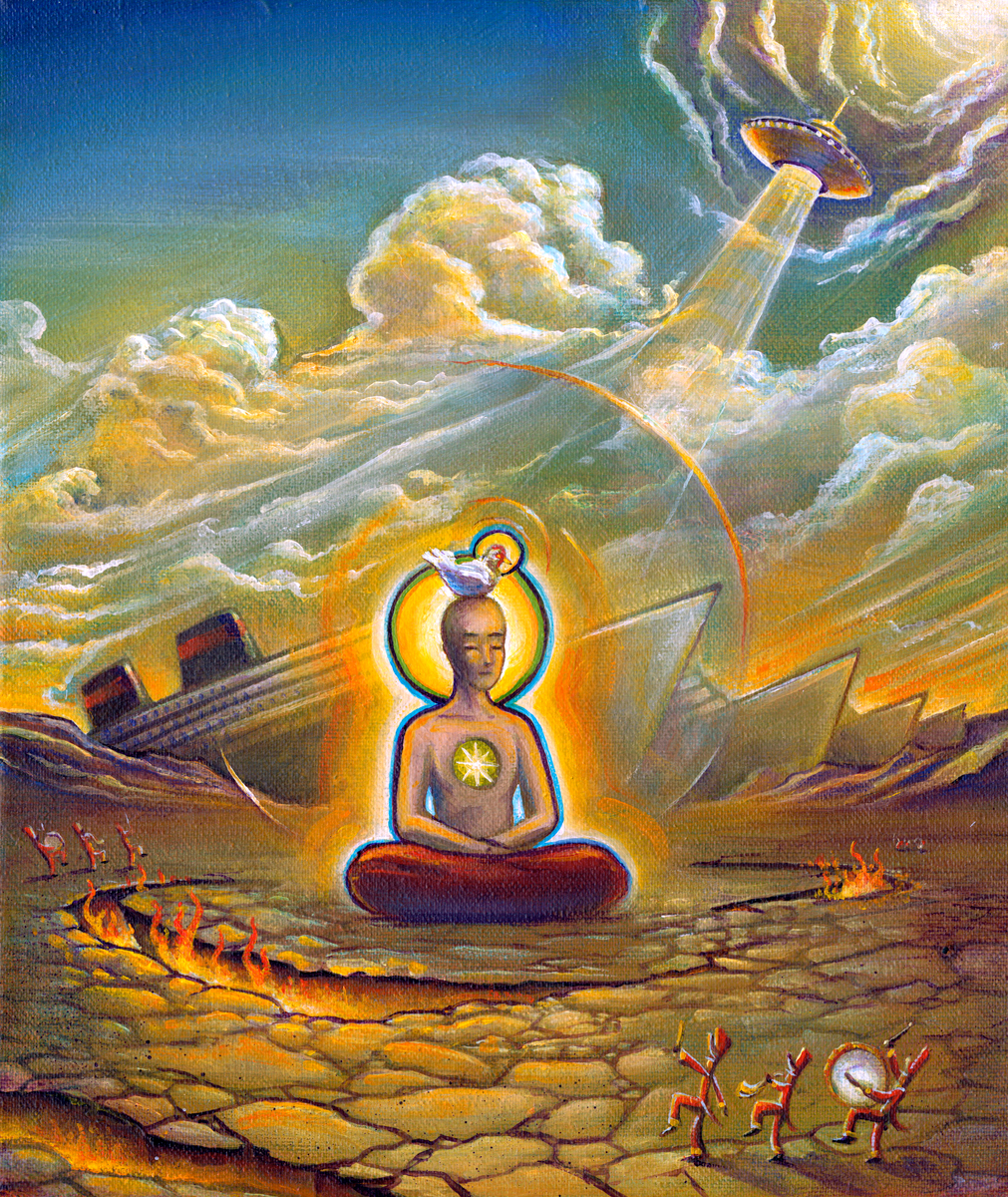
At some point, somewhere, I read something about Surreal art and it's propensity for delighting in the erotic, the absurd, and the bizarre. Maybe it was Wikipedia... In any case, the truth is - Surrealism, as an art form, tends towards the erotic and the absurd. Was a painting in the Surrealist vein meant to make any sense? Or is it meant to simply jostle forth a free association of patterns, concepts, and ideas from the subconscious - placing a seemingly randomly associated sequence of images together, allowing the viewer to stitch them into some sensible relationship, a sort of Rorschach test in paint. I think that if the piece were "directed" towards some conscious goal or had too much consideration given to composition, then it would no longer be a mapping of that subconscious void space. I think that this is why Dali was ultimately ousted from the Surrealist Group - he began to try to direct that inner eye.
I think it a wondrous thing to paint the randomness as it arrives and kill of the self-editor that tries to squash our visions. However, I also think it is also a wonderful thing to be able to direct the vision and work with it - lead forwards without getting distracted by the swarming fetishes and the fireworks throwing cavalcade. Hand in hand, you can allow it to lead you, the artist, to the highest point you can imagine. Every corner, each nuance, is a chance to pull the painting higher, deeper, and into more profoundly illuminating realms.
Kandinsky’s Pyramid
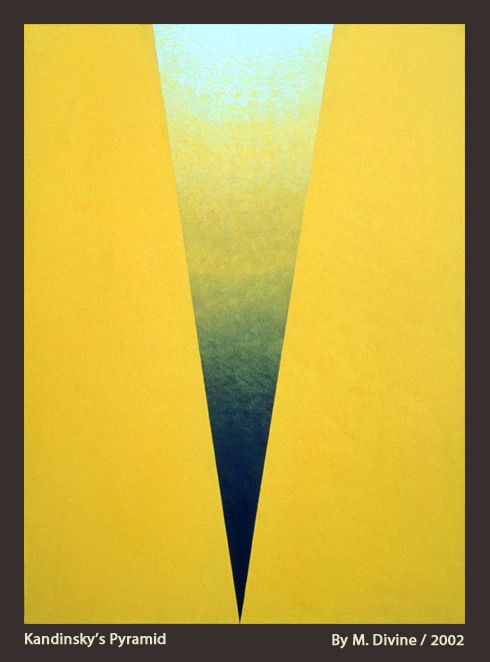
I'd like to share an excerpt from "Concerning the Spiritual in Art" by Wassily Kandinsky, published in 1914. I feelfound that his visual representation of the job of the artist, as he describes it, is particularly helpful when I try to understand my place in this world as an artist. Kandinsky, who might seem a bit antiquated today, was a visionary in his own right. As an artist, he methodically focused his internal lens to paint what came up in a semi-logical and abstract manner. As a writer and thinker, he was looking to understand just what it is that makes up art if it isn't to be a reproduction of the physical world or a regurgitation of spiritual/mythical symbolism.
I've heard people say: but his work is just lines, circles, and weird mish-mashes of color. Think of his work as the first few steps into (or out of) the lucid imagination. His work is part of those early tentative steps into the creative sub/unconscious - into the whole of the inner world. This was a new thing, a new experience, at the time- this painting what you feel instead of what you see, think, or believe. Those first tentative muddlings that grew into precise diagrammatic explorations with a host of attendant essays and diagrams helped to lay the ground work for the hosts of art movements and internal explorations that came after, giving free reign (as we do now) to our collective human creative explorations.
How to be a Painter
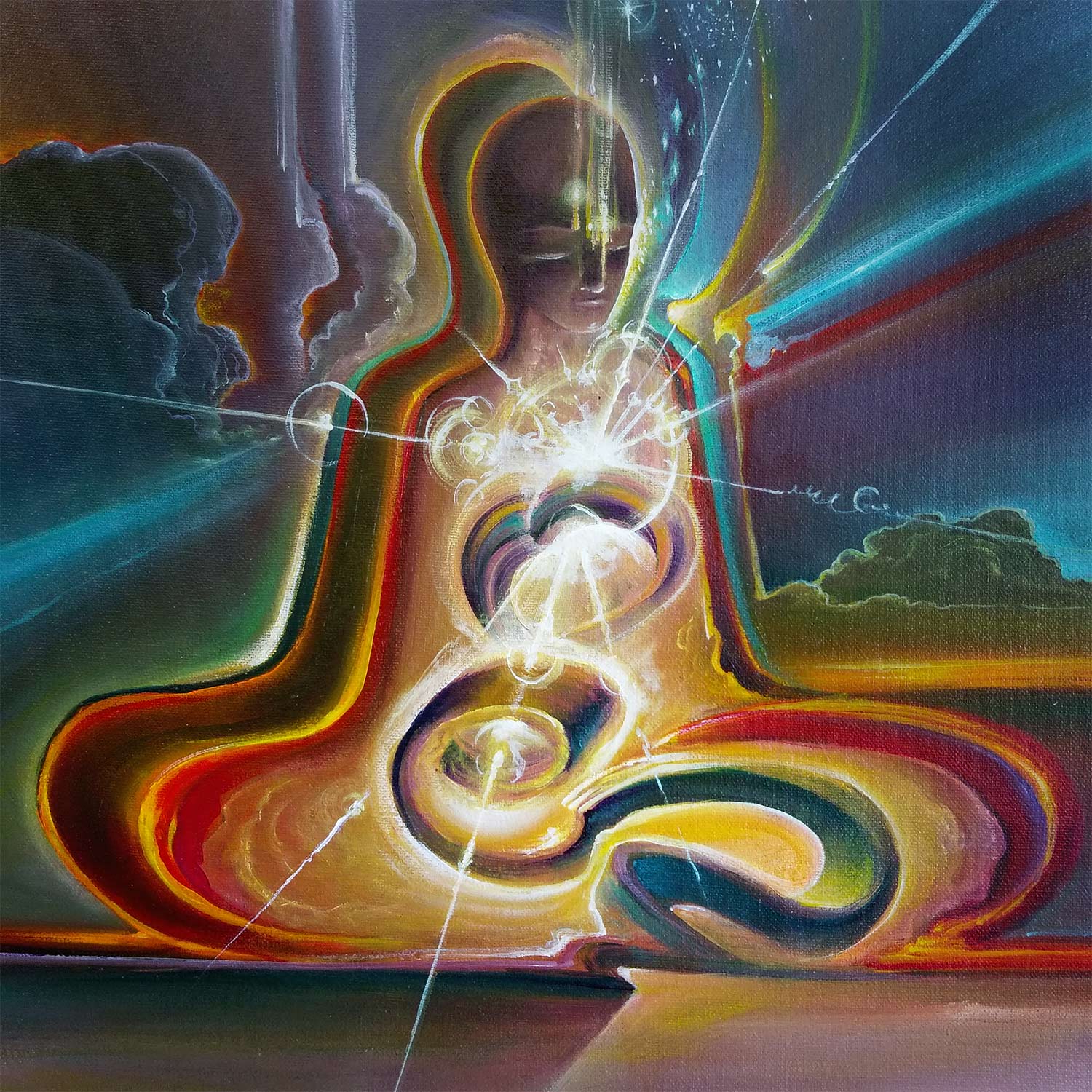
You have to have complete understanding of when your hand is heavy handed, and when it is light. What that feels like, and how to hold it. How to be heavy handed when need be and how to be light handed. How to be able to hold the brush so lightly that, any lighter, and you would drop it. How to hold the brush so firmly and yet, still allow it to have give, allow the canvas to push and pull the brush as much as the hand seeks to drive it.
You must know how to dip your brush in the water so only a millimeter of it’s tip is submerged and pull it out quick and it only gets one drop of water on it. And if it has two, you will know and so flick it behind you with just the quickest and limberest flicks of the wrist, and the extra drop of water will fly away and not defile your painting and create a headache or drip down below you onto the clear and finished sky. And you must be able to do that in a split second because, thought you need a touch more water, you have no time to look away form the painting because it is all happening there. The flower pot is becoming, the sky is opening, the waters are parting… the god is arriving and you can’t miss it for a second.